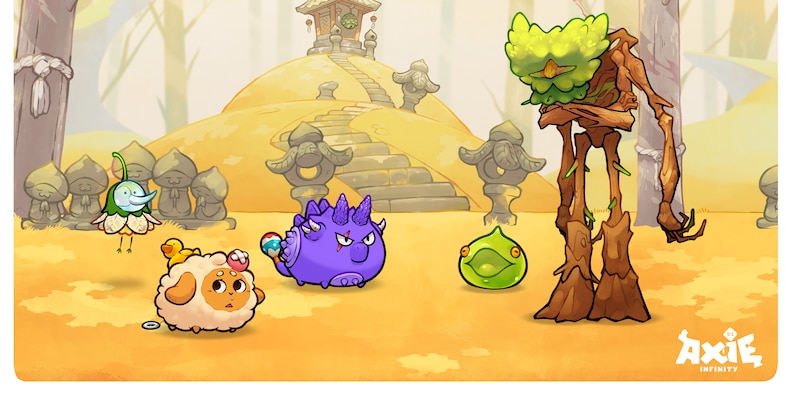Axie Infinity media kit
Value for play-to-earn crypto games comes from a variety of sources, not just one thing. A game’s popularity and demand for its underlying crypto token are all part of the equation, along with transaction fees. Such a business model relies on a constant new flow of players entering the ecosystem and adding value that can be extracted by others. Sign up here for our daily newsletter, 10 Things Before the Opening Bell. Play-to-earn games like Axie Infinity and Decentraland are blowing up across the crypto world.
They seem to be revolutionizing the gaming industry with a new, highly engaging format with huge appeal.
What is the source of the money?
The value across all play-to-earn games comes from the currency that players earn within the platform. But not every game has the same model, and some small names are only looking to cash in on the metaverse craze.
Most games have native tokens for in-game purchases and trading between players. They derive value through the use of their tokens which users and cryptocurrency traders deem valuable, according to blockchain developer James Bachini.
For instance, the model used by Axie Infinity counts on players making a chunky upfront investment in game-specific NFTs (or Axies, in this case). Gamers can then trade their in-game digital assets — earned from playing — at an appreciated price with other gamers, who continue the loop to inject value into the gaming economy.
“If everyone decides to leave and exchange their Axie tokens for other digital currencies, then the token value collapses,” Bachini said. “If the game continues to be successful, then demand for the token continues.”
The game’s owners and investors have the belief that people will continue playing and funneling money into it. That’s because digital asset ownership is gaining mainstream acceptance.
Indeed, Axie’s axs cryptocurrency gained an eye-watering 18,000% over the course of 2021, while Decentraland’s mana token rose by 4,000%, ranking the two of them among the best performers overall last year from the crypto space, all thanks to the popularity of play-to-earn games and the metaverse.
Am I guaranteed to earn money through playing?
No. But it depends on the amount of time you invest in the game, its popularity, and the demand for the in-game assets or underlying token.
“Play-to-earn is not a magic pill that will make any game profitable for players, yet it sets a precedent and a canvas for such a value-distributing game,” said Diego Di Tommaso, cofounder of open-source AR platform OVR.
Is the business model sustainable?
Possibly, but there are a number of problems associated with this concept because the appeal of earning money could dilute the gaming experience. One major risk is a game’s ability to continue growing the economy it intends to build.
The only way a play-to-earn model can be sustainable is having the game’s users be of high quality, according to Adrian Kolody, founder of DeFi startup Domination Finance.
Being entertained and actually having a good time while playing could be watered down by people using bot-farmers as a way to make the most of the game purely for the sake of residual income, he said.
“Bot behavior also incentivizes the auto-dumping of the token rewards that you receive from these games,” he said. “This leads to negative price action, and can mean certain death for some of these projects who rely on their token to do well for sufficient runway.”
Moreover, continuous trading of in-game assets creates the need for a constant inflow of new players to maintain the business model and develop revenue streams.
How is the game itself earning anything?
Easy one. Transaction fees! New players incur a fee for purchasing in-game currency, and this represents a major revenue stream for the game. The most appealing part of the game is the price appreciation of native tokens.
Games with solid communities and brands have an edge over others.
“Axie’s sustainability will be based on how fast it can grow its player base and drive additional utility to its in-game assets,” said Koh Kim, head of ecosystem at blockchain infrastructure startup Mysten Labs. “Axie has literally changed people’s lives – that’s their competitive advantage. No other play-to-earn game has that level of loyalty.”
